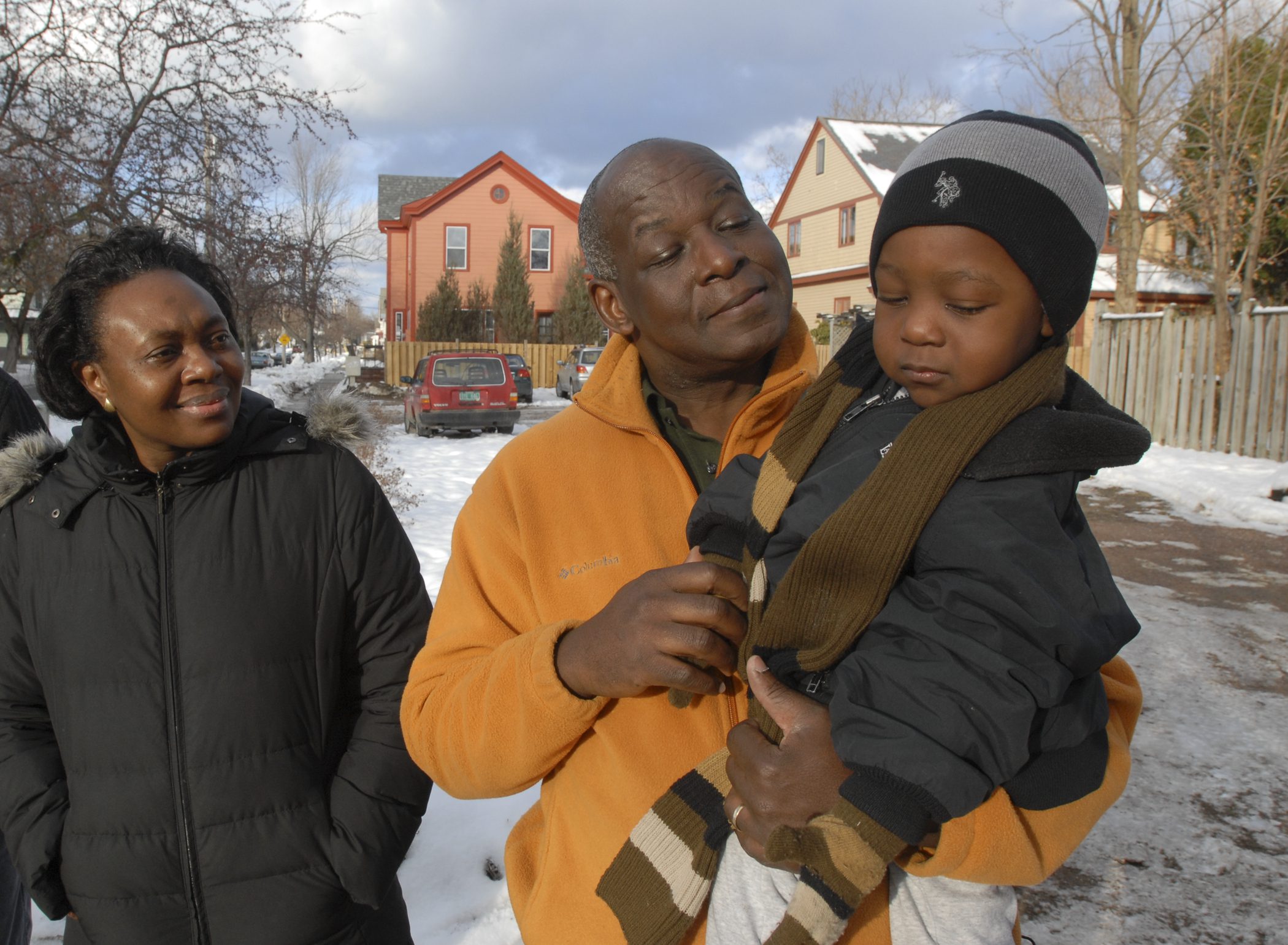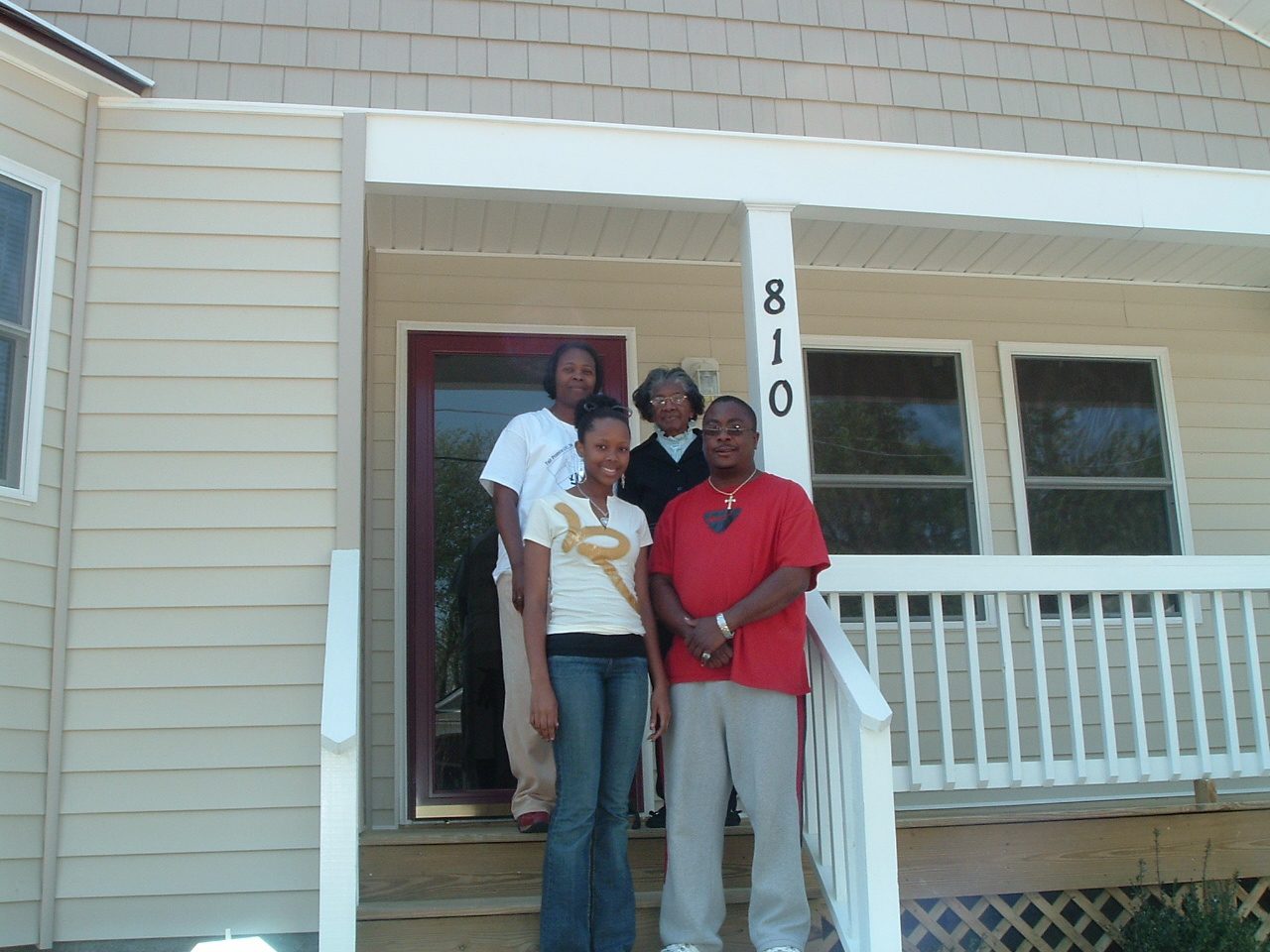This article is part of the Under the Lens series
Community Ownership Takes Center Stage
- Residents gather for a presentation about the Burlington Community Land Trust in the mid-1980s, the precursor of the Champlain Housing Trust. Photo courtesy of Champlain Housing Trust
- Residents sit on the steps of their home in Burlington’s Old North End, the original target neighborhood for the Champlain Housing Trust. Photo courtesy of Champlain Housing Trust
- Two Burlington Community Land Trust (now Champlain Housing Trust) residents have fun at an annual meeting in the 1980s. Photo courtesy of Champlain Housing Trust
- When funding from the City of Burlington was threatened, housing activists led a protest down Burlington’s iconic Church Street pedestrian mall to restore the funding. Photo courtesy of Champlain Housing Trust
- An abandoned building in the Old North End was torn down by the Champlain Housing Trust and a replaced with a pocket park reflecting the desires of the neighborhood for more green space. Photo courtesy of Champlain Housing Trust
- The building is torn down. Photo courtesy of Champlain Housing Trust
- The new pocket park after the abandoned building was torn down. Photo courtesy of Champlain Housing Trust
- Sarah Robinson and her daughter Hazel in their shared-equity home in Winooski, Vermont. The family lived in this home for several years before buying a home on the open market. Sarah currently is a member of the Champlain Housing Trust’s Board of Directors. Photo courtesy of Champlain Housing Trust
- The Kambere-Meli family, immigrants from the Democratic Republic of the Congo, were able to attain the security of homeownership through the Champlain Housing Trust. Charles Meli described the feeling in French as “Je suis arrivé … Everything is okay now.” Photo courtesy of Champlain Housing Trust
Champlain Housing Trust is the largest community land trust (CLT) in America, an impressive example of bringing a radical policy idea to scale. Dating back to Sen. Bernie Sanders’ mayoralty in Burlington, Vermont, in the 1980s, the land trust originally only encompassed that city. It focused primarily on the lowest-income neighborhood in Burlington, but staff realized that if the CLT offered homes only in the city, it was giving its homeowners less choice of where to live than other potential homeowners, so it expanded its reach into the county. When former Executive Director Brenda Torpy joined the team in 1991, she wanted to reach more people, so she had the CLT join the NeighborWorks network and it became the provider for homebuyer services for that part of Vermont—at which point the state asked Champlain Housing Trust (CHT) to offer those services to the whole northern part of the state.
Understanding Community Land TrustsWhat are CLTs? How do they work? What are the benefits and areas of concern? We break it down for you in this handy explainer. |
In 2005 the Lake Champlain Development Corp., which had been working with rental properties in the same area, and with whom CHT had been partnering, approached the land trust about a merger. That was the CHT’s biggest scale up, as the group had twice as many renters as the CLT had homeowners.
“We did it on the condition that we remained a community land trust and that all the residents become members,” says Torpy. The existing membership voted on the merger and related bylaws changes. With the merger, Champlain Housing Trust expanded its board from 12 to 15 members. According to its bylaws, the five resident members must include at least one renter, one co-op member, and one homeowner. Also, the public seats must be assigned to representatives of local municipalities, which was how the Lake Champlain Development Corp. had done it, providing the group with an ongoing relationship to municipal community development departments throughout the area.
Now, Champlain Housing Trust covers three of Vermont’s 14 counties, encompassing essentially the Vermont side of the Champlain basin, and it develops rental, co-op, and ownership housing. CHT’s portfolio includes over 2,400 rental apartments, 600 shared-equity homes, cooperatives, and a couple of hotels that are used to provide service-rich transitional shelter for the unhoused. Amenities also sit on its land, including community centers, daycare providers, and laundromats. Within the city of Burlington, 8 percent of households live in CHT properties.
[RELATED: Setting Aside Housing for Frequent Health Care Users]
“I can’t overstate the benefit of size to deliver quality and deliver consistently and to bring more resources to your area,” says Torpy. “In Vermont everything is ‘small is beautiful.’ They’re very much like the land trust movement. Scale is against mission. We had to really combat that.”
Torpy notes that with affordable housing being so complex and specialized, it can be difficult for smaller groups to maintain the staff they need. At its current scale—115 staff people—CHT can give staff the opportunity to grow within the organization, yet not be crushed by someone leaving. “We have depth,” she says. At this scale they also have the capacity to have local staff on the ground in the rural communities farthest from their headquarters, forming in-person relationships.
“In Vermont everything is ‘small is beautiful.’ They’re very much like the land trust movement. Scale is against mission. We had to really combat that.”
“We’re 100 percent sustainable at this point,” says current CEO Michael Monte. “We’re not a fledgling organization, we don’t have to figure out how to achieve sustainability. Nobody’s flying by jet to a vote or anything like that, but everybody’s paid and we have the resources to get the work done.”
And that depth and stability has flowed into the group taking on back-office and stewardship functions and support—both formally and informally. “We voluntarily do a lot to help the smaller organizations that are outside of our service area,” says Torpy. “And we are also paid by our state agency to support all the other sponsors [of shared-equity homeownership].” When a home in one of those portfolios goes through a resale, CHT manages the process and ensures that the resale formulas and income limits are followed. But Champlain is careful about expanding its actual service area. “Regions matter in Vermont,” says Torpy. “To be seen as a statewide agency, coming out of the city; it doesn’t elicit trust at the outset, right? A good model for growth is you start to offer services, and ultimately, could organically integrate when you’re not strangers.”
The larger size also has some benefit for a strong resident-led governance. Champlain does constant outreach to residents to seek new board members, and it has put a lot of work into figuring out how to make the process not daunting for renters. It also has a range of committees that people can start in, forming a pipeline for the board, and allowing folks who are interested to start somewhere even when there aren’t board vacancies. For the more distant smaller rural communities, sparing someone from local government to participate on the board was too much to ask, so instead, the regional planning commission selects someone from a slate of nominees the CLT helps generate to represent the area. And residents from those farther areas do serve on the board as well, with the CLT making accommodations to enable their access as it would for any other board member—in one case they set their IT staff up to help get a resident board member online and able to participate electronically.
The Champlain Housing Trust also benefits from strong political support at the local, state, and federal level. Many newer community land trusts struggle to secure resources or win legislation, as their model is unknown or suspect to local power brokers. But in Vermont many of the most powerful politicians in the state are strong supporters of the land trust.
“We can say that Sen. Bernie [Sanders] is a founder, in many ways, and we can also say that Patrick Leahy is a very close friend,” says Monte. “We remain in communication with those folks on a regular basis about what resources are needed. Vermont as a small state gives you access, compared to a nonprofit our size in California or New York.”
|
Please consider supporting our small and dedicated team on Patreon. |















Comments